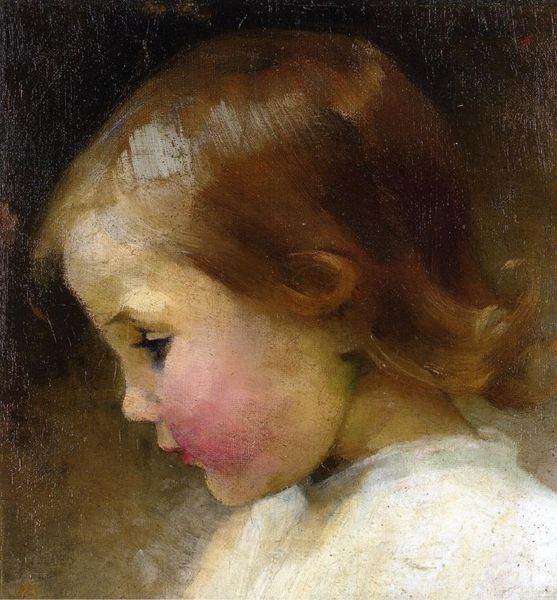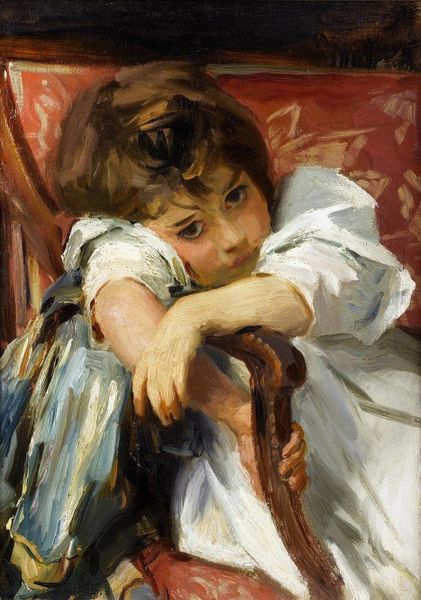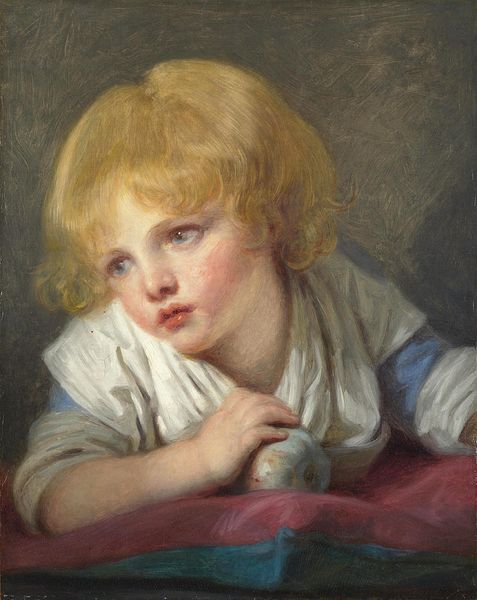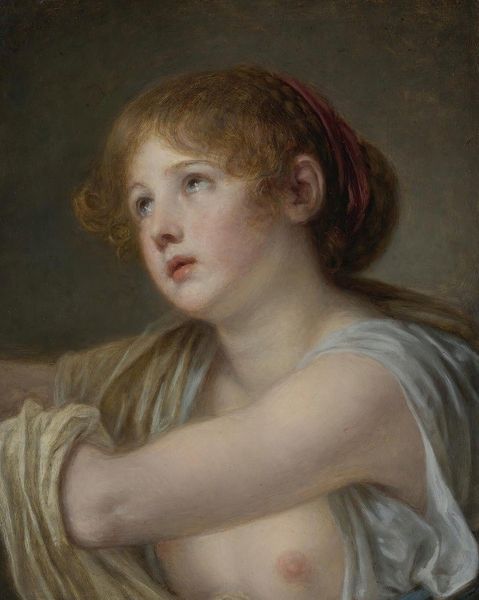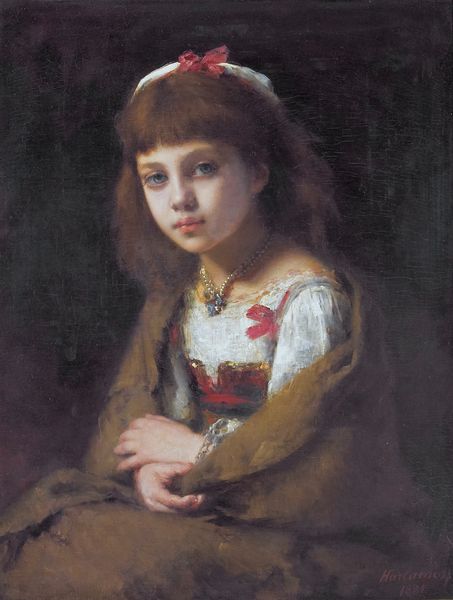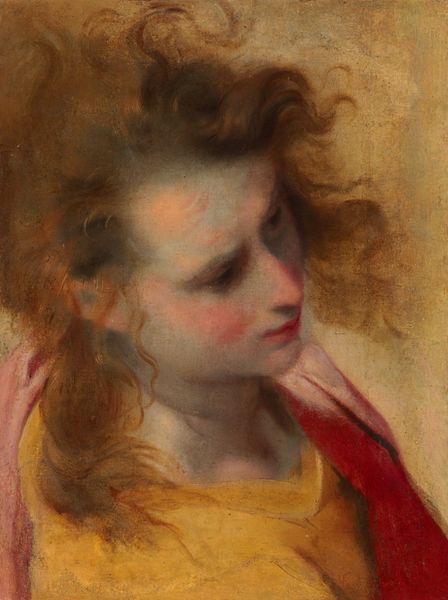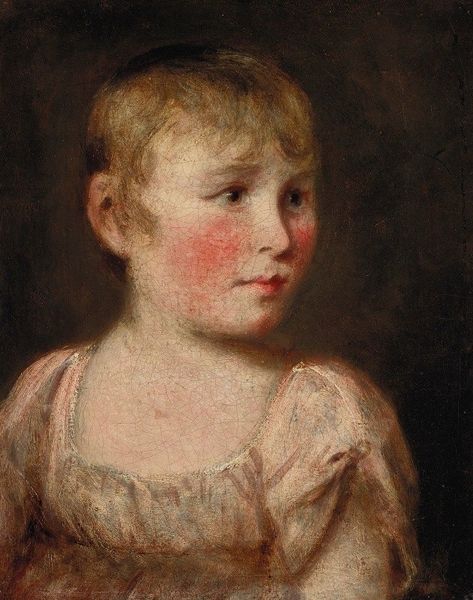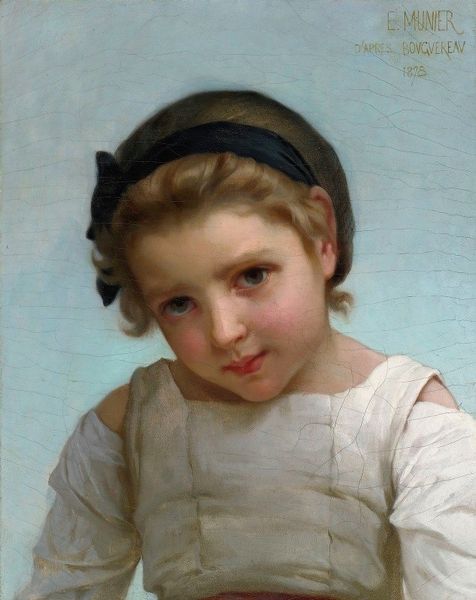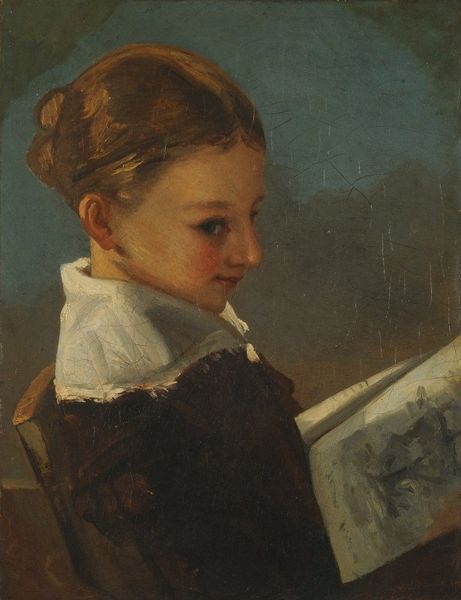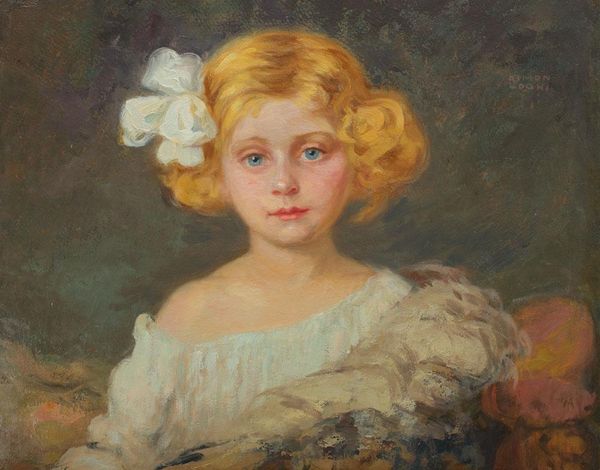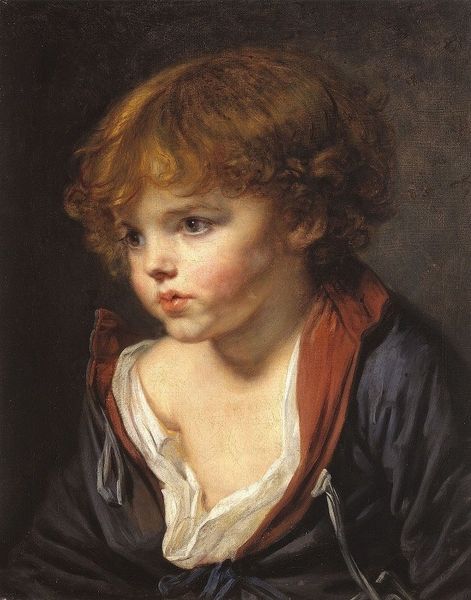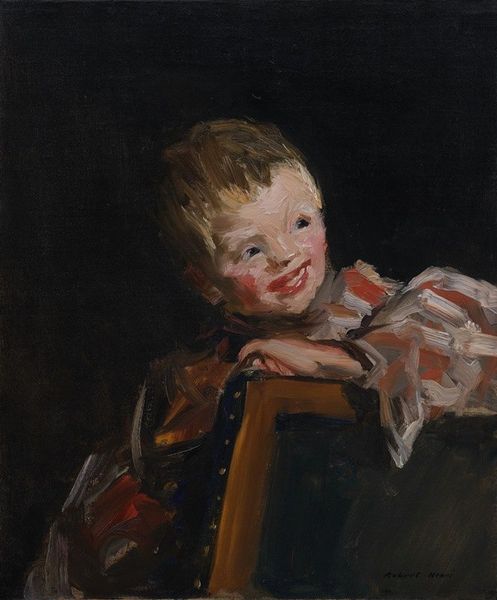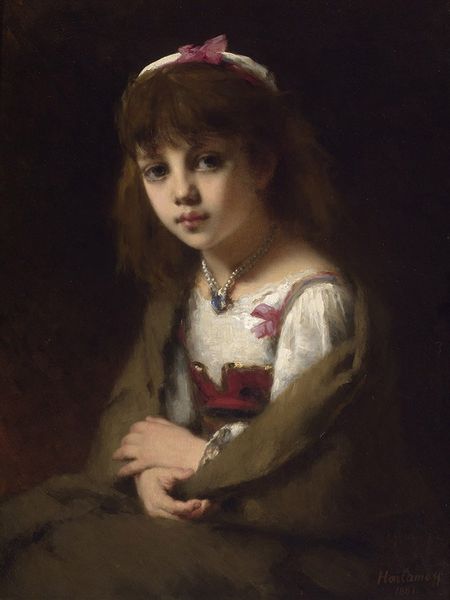
Copyright: Public Domain: Artvee
Curator: Jean-Francois Millet painted "Young Woman" between 1844 and 1845. It's an intimate portrait rendered in oil. Editor: It strikes me as rather melancholy, almost subdued in its emotional palette. The soft, diffused lighting contributes to this feeling. Curator: Indeed. The interplay of light and shadow is carefully calibrated. Note how the light gently illuminates the young woman’s face, directing our gaze to her thoughtful expression. The tonal harmony across the piece invites introspection. Editor: Beyond the surface, I’m intrigued by the sitter's attire. The headscarf, her simple white garment – they seem indicative of her social standing. What can we infer about Millet’s intentions in choosing such a subject? Curator: He departs from the conventional aristocratic portraiture by portraying a commoner. He elevates her with dignity, suggesting a radical shift in artistic perspective, towards democratic ideals within representation. Editor: And that materiality itself – the very pigment ground into the canvas – serves not just depiction, but also a social function. I can almost feel the labor embedded in each brushstroke; it humanizes her beyond simply form. Curator: An astute observation! He masterfully uses color and composition to achieve something remarkable, a formal portrait that resonates emotionally. The gaze she casts toward the side plane creates movement. Editor: Though, I wonder about his studio and access to models. Millet must've been part of an intricate web of commerce, suppliers, and audiences… even paintings of simple subjects rely upon a network. Curator: Perhaps... nonetheless, within the boundaries of that reality, he compels us to contemplate universal human sentiments by using compositional structure, light, and shadow. It certainly inspires prolonged aesthetic engagement. Editor: Thinking of artistic legacies, "Young Woman" provides fertile grounds to rethink our historical readings. It's through such tangible materials and modes of production we confront social stratifications of art, then and now.
Comments
No comments
Be the first to comment and join the conversation on the ultimate creative platform.
